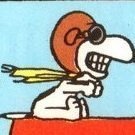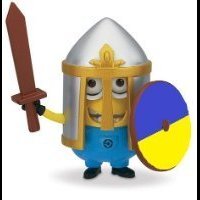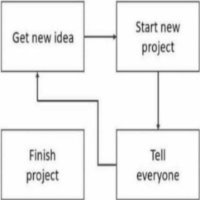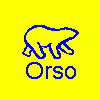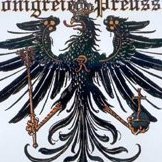Search the Community
Showing results for tags 'WW1'.
-
Hello my friends. I first want to say that I’ve only been a member here since December ‘23. Newbie. And I have to say; I love this site and the people on it. Top quality all around. Thank you for letting me be here to share and learn from you. So many good modelers here!! Now, onto to today’s BEAST of a model, the Tamiya 1/35 Mk. IV Male. What a great kit! Typical Tamiya, pain free. At least till I got the the weathering. Oh man, let me tell yah, there’s parts of my body on there, inside and out. I sh*te you not. Here’s a few shots to prove it... I painted in Tamiya with a glaze technique to build the color and saturation. I did lots and lots of washes. Lots! Lots of dry brushing to get those beautiful bolts to shine through. I used every trick up my sleeve to create dry mud, wet mud, angry mud, happy mud. I think I even added some drunk mud. No, I’m sure of it. I used Mr Hobby weathering pastes. I think all of’em. I used their “wet effect” along with a few here and there. I think I even spit on the thing a few times. Sorry, true story. Maybe I should package that up and sell it as it worked. At least a little. I had some fun with the photo shoot and my wife’s camera. Sorry for so many pics. This is my first WW1 model and I loved doing it. Granted it took me awhile but totally worth it. I hope you like it. Please share your thoughts or critique. Cheers, Graeme
- 31 replies
-
- 44
-

-

-
- Mark IV
- Tamiya Mk IV
-
(and 1 more)
Tagged with:
-
Hey! um, this is my first post here and i started tu cut and join some stuff and idk, but i think it looks pretty decent...
- 23 replies
-
- Battlecruiser
- ww1
-
(and 1 more)
Tagged with:
-
Hello everyone, Here is my latest completion, the Eduard 1/48 Albatros D.III, built for the current Eduard WW1 group build over on Facebook. This kit traces its lineage back to the late 1990s, and still remains an excellent base model for further improvements. I made a few modifications, including correcting / re-scribing the nose panels, adding details to the kit engine and interior, adding a scratch built fuel tank, replacing the kit gun barrels and muzzles with MASTER metal items, adding nails to the fuselage, adding the aileron control arms to the upper wing, and replacing the undersized kit wheels, amongst other minor additions from various Eduard etched sets for the base kit. Rigging was done with elastic and utilising “Bob’s Buckles” metal turnbuckles. I painted the model in the markings of Ltn Gustav Nernst, Jasta 30, April 1917. All markings were sprayed using home made masks, and the serial number was also a home made decal. Paints were all SMS Acrylic Lacquers (my new favourite paint), with the fuselage plywood effect and propeller done with oil paints. Weathering was kept relatively light, given the somewhat short service life of these aircraft. And some progress shots: For my build log, please see here – https://forum.ww1aircraftmodels.com/index.php?topic=13996.0 Feedback, comments, and suggestions for improvements are always welcome and encouraged! Many thanks for looking! Brad
-
Hallo This are photos some years ago, when I built this kit. This was my second WW1 kit, at this time without any experience in WW1 aircraft. In at this days in an awful physical condition after release from hospital. I cam acros this pics, when cleaning my computer from old files. Maybe it is of interest. Have a look: Happy modelling
-
Almost all Northern Ireland War Memorials have a British Army figure atop.. All the figures are different A number of years ago I found out that all these figures were sculpted in life by one sculptor. They were all sculpted during late 1920 to early 1922. Most of the War Memorials were completed in time for the 1921 Armistice Day Commemorations Further, I found out that the sculptor used real WW1 soldiers in their real kit as models. The soldiers chosen, and paid, were mostly unemployed Irish ex-British Army soldiers Thus, I think its reasonable to assume that the bigger than life-size bronze statues are wearing WW1 kit and can be used as some sort of reference Last Tuesday I finally had the opportunity to start on my 'project' of photographing these statues in a 'walk-around' type photo session This is the statue on the Comber, County Down, War Memorial These are just a few sample photos. I couldn't get a decent photo of his rear left because of a big tree close up and blocking the view. It might be better in winter
- 3 replies
-
- 17
-

-

-
- WW1
- British Army uniform
-
(and 1 more)
Tagged with:
-
Hi all – here’s my latest completion, the Eduard 1/48 Albatros D.V, boxing number 8113. This one had a couple of modifications. I scratch built a number of internal details, including internal frames, a fuel tank, a compass, and other instruments. Details were added to the engine to better replicate the Mercedes D.III engine used on early DVs. Belts and other bits and bobs were also added inside. One of the enduring criticisms of the Eduard Albatros DV is the kit’s short undercarriage legs; accordingly, I replaced these with some resin aftermarket legs (I can’t remember who they are from, as I bought them a number of years back, but they were a bit rough). I also replaced the kit spinner with a home made vacform item, as the kit spinner is also too rounded and bulbous. I also hand-riveted the nails on the fuselage. Rigging is elastic, with “bob’s buckles” turnbuckles and sleeves. The exhaust pipe is a Rex metal item. The machine is painted in the markings of an early DV, D.2164/17, flown by 27 victory ace Karl Thom when he flew with Jasta 21, around June 1917. Thom would eventually earn the Pour le Merite, or “Blue Max”, on 01 November 1918, being one of the last aviation recipients of this revered award. Paint was a combination of oil paints for the fuselage, and SMS acrylic lacquers for the other colours (most were my own mix), and the decals from Eduard’s earlier 1124 dual combo boxing. Enough talk, here’s some pics: And some pics of the interior / modifications: For a more detailed build log, see here – https://forum.ww1aircraftmodels.com/index.php?topic=13255.0 This kit has been a stalwart of Eduard's WW1 line up for 20 or so years, and she still builds up as the best 1/48 DV on the market today. The kit's relative simplicity when it comes to struts and rigging also makes it a great kit for someone cutting their teeth on 1/48 WW1 models. Thanks for looking – feedback always welcomed! BC
- 34 replies
-
- 63
-

-

-
- WW1
- Albatros DV
-
(and 1 more)
Tagged with:
-
My most recent completed build is, of course, the DFW Floh. 🙂 This one is by Elf models (appropriately enough) in 1/72 scale. The kit is a good one, but I had no end of trouble during the finishing stages which I'll spare you the details of, but the crowing glory of which was dropping a pot on a wing after rigging detaching it and completely crushing the interplane struts 😒 Luckily I make all my struts from filed brass rod so after a few days I cautiously removed them straightened them out, repainted and carefully reinserted them retightening the monofilament rigging lines (These are superglued into holes drilled right through the wings) With that done I was able to twist the wing back into place and run a bead of thin cement along the join; not perfect, but better than hurling into the bin . . . Trickiest finishing job was adding the thin black line to the edges of the flying surfaces; with the high contrast between colours there's no hiding place and close up photos are not really your friend. Final job was to add the propeller (hand carved from laminations of ply) and then step slowly away from it 😅 Paul ps Model is now based up with a 3d printed figure of the designer to give a sense of scale. I was going to use Dick Dastardly, but thought perhaps not 🙃 <a<a
- 14 replies
-
- 41
-

-
I've got two sets of 3D printed 1/72 wicker seats from Gaspatch Models, they look really nice, and the cushion is a separate piece. They come as two-pack, one with short backrest and the other with tall. So my question is, was there different purpose for the short seat, for instance for the gunner? Or was it just pilot's preference, or perhaps just what was available. I saw a photo of a Sopwith Camel cockpi - it probably was a replica- but it had a short version.
-
Morning all. Managed to wrap up this build which has been on the bench since early December! There's a full thread of what's been going on here- For those who've not been following it started life as the 'new' KP 1/72 kit, but had a lot of changes made during construction and various bits of metalwork and etched brass details added (struts are made from soldered brass for example) Cheers Paul
-
And it’s done! After just over a year, a lot of plastic card, a Costa’s-worth of coffee stirrers and millions of tiny rivet balls I’ve finally decided that my Mk 1 Gun carrier is finished. It was a great fun project and I learned a lot. Everything is scratchbuilt apart from most of the figures. The large chap with the leather jerkin was scratchbuilt (well, his legs, arms and torso were) but the others are cheap knock-off resin figures. I tried to replicate a photo of “Darlington” cresting a small ridge while the top brass look on. I’m happy that I’ve pretty much captured the look although I shied away from covering the whole vehicle with quite as much kit as is shown in the photo. Painting was done using mainly Tamiya paints, with weathering being mostly oil paints with a little clay wash and a dab of pastel dust. I constructed it so that the upper hull can be removed to show the interior off. Things I’d like to improve next time…. Figures; there’s always room for improvement there. I’m very slowly getting better, but there still seems to be miles to go. Groundwork; this was my first attempt at painting grass and earth on a black-primed base and I’m not 100% convinced that this is better than using coloured static grass. I might try a hybrid approach next time. Foliage; my little bush is a bit sad, and the (real) cow parsley I used to represent real cow parsley isn’t particularly convincing I don’t think. Thanks to everyone who followed and provided brilliant advice, feedback and support during this extended build. The (12 page) WIP can be found here….. Mk1 gun carrier scratchbuild - Work in Progress - Armour - Britmodeller.com
-
Does anybody know if French decals for the CSM model exist? Would prefer to do the mfg country, as opposed to russian, serbian or other countries. Scalemates is a bust, and a general Google shows up reasonably simple schemes. So if all fails, I can mask roundels.
-
Hallo After a short while I finished this FF 33 E. The kit was fair. Not good and not bad. The etched parts were a certain thing by itself. Read my WIP, and you learn more. Well, the rigging was not so difficult. It was just two mornings. After this model I jump in deep water. With my Su-27 K from Minibase. Happy modelling
-
General question, if there are specifics please do share! Am I right in assuming the cylinders were cast iron/steel? Or aluminium with a steel sleeve? Heads and crankcase in aluminium?
- 17 replies
-
Hallo This is my Friedrichshafen FF 33 E in 1/48 from Techmod. Here I also have etched parts from Part. Now, I started today with this subject. Now, I am playing with the idea to use the etched parts also for rigging. The point is, that holes have to be made at all rigging parts. The other option is to work without etched parts in my already well proved version. See example on my Gotha G.1. On the right plastic part of the fuselage I have a detail. The opening for the front cabane strut is too big, and so I reduced it by filling it. Here I have to drill later on for the cooling piping. So far Happy modelling
-
I started on some supply sledges. 1/72 scale, about 55 mm long scratch built. Now I need a Mk.IV tank to tow them.
-
Not realising the whole bunfight protocol our hero got stuck into a KP 1/72 DH5 as soon as he saw mention of a DH Cookup in one of Marko's threads (Sorry old fruit - promise it won't happen again) ☺️ Anyway since the current Eindekker build was sitting in the cabinet waiting for paint to dry and I'm not getting any younger I cracked open the box and made a start. Overall impressions were pretty good initially. I've got a few of these KP boxes on the shelf and unlike some it doesn't have the prominent rib ridges that some have (For those of a certain age think the old Matchbox trench digger in reverse) 😉 The softish grey plastic is easy to work with even if many of the 'details' are rather heavy handed and needed refinement. First up though was sorting out the flying surfaces which needed a slight adjustment to outlines and a lot of sanding to get somewhere near acceptable thickness . . . . After much sanding (That well known village in the Cotswolds) we ended up with some useable parts that just needed the control surfaces removing and new control horns adding. The rather horrible looking cowls opening cowl was too small so needed enlarging as well as slots refining and new stiffeners added with 5though plastic card strips after everything was sanded (anyone spotted a theme here?) After that all the rigging holes were drilled and for once I managed to avoid breaking any 0.3 mm drills 😎 After a few evenings work I've now got a kit of parts that I'm reasonably happy with (Cowl stiffeners yet to be added in the above picture) Roden supplied a much nicer engine and wheels as well as a half decent Vickers (although it would be nice to have a Miniworld or Gaspatch one there are none easily available at the moment. If anyone has a spare laying around that they'd like to sell please get in touch) I added a few wrinkles to the fabric sides and new plastic tubular intakes. The prominent fuselage stitching is absent in the main and in it's place are a few more trenches ready to be filled 🤨 Hey ho. Overall I really like the kit despite what I've said; it's an interesting prototype and would build into a sound looking DH5, but I just like to fiddle . . . . . Toodlepip Paul
- 75 replies
-
- 10
-

-
This is my effort to build Wingnut Wings’ post war F.2b. Of course it makes up into a beautiful model and is pretty straight forward, although I think next time I would add the engine firewall after fitting the cockpit. I used ezline for the rigging without any turnbuckles this time. I think I’m just about at my limit in terms of finish here, so would welcome suggestions on how to improve. Anyhow, on to the pics:
-
Hi all - I have decided to start another 1/48 DVa. Having built several before, this time, I have gone with the Revell boxing, which is a re-box of the Eduard kit. Revell have moulded this kit in a very light grey and slightly brittle plastic. Reflecting upon the fact that a tightly cowled Albie hides all of its secrets, I decided to bite the bullet and tackle something that i've wanted to do for a while; an un-cowled DVa. The first thing to do, unsurprisingly, was cut off the kit cowls, and thin down the fuselage sidewalls. I sanded off all of the interior detail, and thinned down the interior of the nose section with a dremel: Now, the real challenge... how do deal with those curves, and build all of the distinctive formers? Having sanded the fuselage, it was now not simply a round symmetrical section that I could use. I also really didn't want to make up each frame painstakingly by hand. I decided that I would use my Silhouette Portrait cutter to cut the formers from thin plastic. That would also allow me to design the lightening holes and have them cut out cleanly. To do this, the first thing I did was roughly get the shape of each frame using thin plastic. Some of the shapes were going to be a bit 'odd', due to the way that the plastic had been sanded, creating shapes / contours that weren't quite oval (mainly at the point of the firewall, as you can see I needed a slightly odd shape here): This then allowed me to scan the shapes into the Silhouette drawing program, and trace out each shape. The appropriate details were then added: I then used the Shilhouette Portrait cutter to cut the shapes from 0.010" plastic. I had to use this plastic thickness as anything thicker would have been too hard to cut. This plastic was too thin in and of itself for each frame, so in order to provide some rigidity I cut two pieces for each frame and glued them together: I then had the frames I needed to create the main structural elements: Next was re-adding the structural detail in the fuselage halves: And here it all is, VERY roughly placed within the fuselage. It may need a couple of adjustments here and there, but I think it will all work. And proof the fuselage halves still come together... I now have the basis to commence the rest of the interior. Phew...! Happy to take comments, tips and feedback. Cheers again! BC
- 16 replies
-
- 22
-

-

-
The kit is WNW. Scale 1/32. As usual a good kit, an instruction with some weird instruction steps. So I had to memorize it and built it straight way. The rigging was no problem at all, since we developed a good technique already. You can find all in the forum anyway. In summery it took me 2 months beside my job. Happy modelling
- 11 replies
-
- 54
-

-
Sopwith Pub RFC The kit is WNW. Scale 1/32. As usual a good kit, an instruction with some weird instruction steps. So I had to memorize it and built it straight way. The rigging was no problem at all, since we developed a good technique already. You can find all in the forum anyway. In summery it took me 2 months beside my job. Happy modelling
- 13 replies
-
- 41
-

-
Hi, guys... It's been a while since I posted here on Britmodeller, so I thought you might like to see the latest addition to my collection. This is the wonderful Gotha G.IV kit from Wingnut Wings. It's a large kit when finished, with a wingspan of almost three feet, but like any other model, spend a little time and you'll likely end up with a good outcome. So, to begin with, I painted and assembled the fuselage floor, bulkheads and cockpit area. Everything you see in this first image comes from the kit and I especially liked the seatbelts, oxygen bottles and the instrument decals, all of which bring great realism to the model. The floor was given an enamel undercoat of pale khaki, then overpainted using burnt sienna oil paint from the Cass Art range. I was very pleased with the wood effect on the floor and bulkheads. In this next photo, the framing around the cockpit has been added in and its rigging shows up well. The 'steering wheel' control mechanism is well produced, as are the integrally-moulded fuselage frames, although some of the cockpit areas in my kit had a lot of ejector pin marks. These were in tricky areas in some instances, but all were easily enough removed. The majority were on the right side of the fuselage, so had to be addressed, as they would have been very prominent if left unattended. I took this photo after the fuselage was closed up, and you can see some of the detail in the gunner/bomb-aimer's forward position including the bomb release mechanism and the oxygen bottle. Once I was happy with the internal areas of the fuselage, I moved on to building the engines, leaving one covered and the other without its engine panels in order to show the detail. The central section of the bottom wing was also painted up and the walkways painted metallic and then blackwashed to give a bit of a 'worn' look. I liked the fine detail on the radiator grills and the exhaust pipes came up very well with their grungy appearance; this was oil paint used again, and blackwashed. After varnishing the fuselage, the relevant decals were attached and the external fuselage rigging - which extends to the tail and connects with the control surfaces - was added on at this point and later tidied up when the elevators and rudder were attached. The few transparent pieces included in the kit are small, but are very clear and fit well. Some additional blackwashing was applied to both the panels and small fitments on the fuselage sides, and the engine cowlings. Moving on to the wings, both upper and lower surfaces were painted in the dark grey-blue, with the exception of the underside of the top wing, which like the engine covers, struts, wheel hubs and fuselage and nose panels, were left in the extremely pale blue shade, almost an off-white tone. Adhesive tape was added to cover the wing ribs after a whilte undercoat had been applied, thereafter being oversprayed in dark brown in a non-uniform manner before the tapes were removed. When this happened, the original white undercoat was again uncovered on the ribs, and these were later given an overspray in the relevant camouflage colour... ...which in turn, was a process that was helpful in drawing back any excess of the brown paint and also helped to remove the white and bring the ribs, generally speaking, back to the appropriate colour. I deliberately left them slightly 'untidy' in their appearance as I felt this gave a good final presentation. Once varnished, the national markings were applied. So, in the following image, you can see the extent of the wingspan with the lower wing sections now in situ; the cabane struts have also been attached. The Gotha's wings had noticeable dihedral and on such a large kit, you may think this would be difficult to effect properly, but the lower wings have the correct dihedral built into them and have quite a bit of 'play' as well, and the top wing, after securing the rather flimsy lower central section into place, rests easily on the cabane struts and engine frame struts without any additional support required at this stage. Now you can see that I have started to attach the interplane struts; I rigged the inner areas between the engines and fuselage first as these are the most difficult to get access to and some of the rigging crosses over other lengths of rigging diagonally and therefore, awkwardly... patience is definitely needed here, and possibly a leather mouthpiece to bite into if/when things don't go according to plan - you don't want to scare the neighbours with aggressive yelling, cursing and swearing at the top of your voice! 🤬 🤣 The cabane struts and each section, moving gradually out towards the wing tips, were rigged in their entirety before moving on to the next. The struts themselves were easily inserted into their location holes due to the 'play' in the wings, and this flexibility was very much instrumental in making the whole rigging process much easier. I resisted all thoughts of turning the kit upside down to complete the rigging under the top wing, instead electing to use two blocks of upholstery foam to support the model while accessing these areas in order to attach the turnbuckles into the leading and trailing edge points. The larger block of foam, which stood about four inches tall, allowed me to tilt the model forward onto its nose, thus giving better access to the trailing edge. The thinner strip of foam was used to support the undercarriage and raise the front of the kit, thus giving better access to the leading edges. In the latter process, it's good to remember to position the tail against something solid in order to support the model and minimise the likelihood of it slipping off the foam, and this should be done before attaching the tail control surfaces. All of the above negates the requirement to move the model around as it takes on more and more weight and size, and also reduces the need, in my opinion, to go boring right through the upper wing to draw rigging through before secuing it. I have seen this done online and admire modellers who use this method, but I wouldn't have confidence to try that, and given the rarity and cost of obtaining the model nowadays, I feel my method is every bit as effective. The rigging was completed using elasticated thread and the turnbukles came from the excellent GasPatch range. These last few photos show the model in its final stages of construction. All control surfaces are attached and rigging finished; upper wing fuels tanks, MG mounts and the guns themselves, the bombsight and all external ordinance has been added, and only a space in the cabinet needs to be found! All enamel paints used were from the Humbrol range and markings largely from the WnW kit itself, although the 'Lori2' markings were taken from the Pheon decals after-market offering for this model. So, I hope you have enjoyed seeing the photos from my build. There is a more extensive build article which you can access here: https://imodeler.com/groups/imperial-german-air-service-luftwaffe-group-build-may-1st-1910-to-present-day/forum/topic/wnw-gotha-g-iv-1-32-scale/, and I've made a YouTube video which you may also find interesting, available to view here https://www.youtube.com/watch?v=yQqvVuxKUyM. Thanks for looking in... ;-). Regards, Paul
- 15 replies
-
- 60
-

-

-
RAF BE2C 1/32 Lukgraph The journey is over and I have to admit I have enjoyed it thoroughly. The BE2 is an extremely interesting subject and the CDL , woodgrain and metal is something I simply love. I find the kit to be the best by Lukgraph so far. No issues and and an extremely enjoyable to build. Painted with AK RC, AK 3GEN, Gunze, Tamiya and other. Weathering with AK pencils and oils. The propeller is hand-carved and as always with help of Michał Jakś (laser cut outline) and the hub is by Proper Plane.
- 31 replies
-
- 82
-

-

-
Hello all – here’s another completion just off the bench; a ‘What if” Fokker Dr.1 seaplane, based on the 1/48 Eduard Dr.1 kit. This one was just for a bit of fun (so apologies to those who aren’t fans of ‘what if’ subjects). I added floats, extended the cowl to fit a Oberursel Ur.III twin row rotary engine (from Small Stuff; this engine is a kit in itself), added a vertical stabiliser, added some cockpit details, and replaced the guns with some from Gaspatch. I also scratch built the beaching trolleys and trestles. The German naval lozenge is from Aviattic, and decals are from the Eduard kit and the spares box. Some in-progress pics (the full build log is here - https://forum.ww1aircraftmodels.com/index.php?topic=12812.0 ) This was an enjoyable little project, and looks rather unique in the display cabinet. Thanks for looking! Cheers, BC
- 33 replies
-
- 64
-

-

-
Hello everyone – this is my latest completion, the 1/48 Eduard Fokker Dr.1. The kit is painted in the markings of Ltn Hans Koerner, Jasta 19, May 1918. I added some detail to the cockpit, replaced the kit guns with items from Gaspatch, added the telescopic gunsight that Korner fitted to his machine, and shortened the undercarriage struts to correct the ‘sit’ of the model. The rest was out of box. The Fokker streaked camouflage was from Aviattic, and the personal markings from Pheon. This is a lovely little kit which presents minimal problems in construction (save those that were self induced), and was a joy to build. For the build log, see here – https://forum.ww1aircraftmodels.com/index.php?topic=13042.0 Thanks for looking, and feedback always welcomed! Cheers, BC
- 12 replies
-
- 39
-

-

-
Ahem! after a false start of this thread in the wrong place (Sorry Mods)🥴 Here's a quick update on what I've been up to I bought a dual combo of Eduard's lovely Nieuport 17 and started one as my 'first' model, but after a few goofs I ended up using it as a test bed to get used to cleaning up plastic, painting and decaling before having a proper go at the DR1. Since the early Nieuport was sitting there mocking me I decided to have another go at one using the second kit. . . . I'll spare you the blow by blow commentary on these, but the struts and u/c are all scratch built from sanded brass rod and I added a few finer details to the cockpit (not that any will be seen) I beefed up the cylinders with some jewellery wire. Wing struts ahd the detail sanded off and were then subjected to a session with the sanding stick to get them thinner (they may be too thin so I'll need to go easy when rigging this one) Painting is all in acrylics (Vallejo air mainly) and I'm gradually learning how to fight the airbrush to do what I want. Enough rattle here are the pics Paul

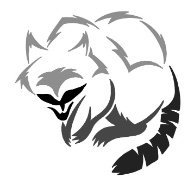
.thumb.jpg.88079287985aeb50f1ee404da4cebb1f.jpg)
